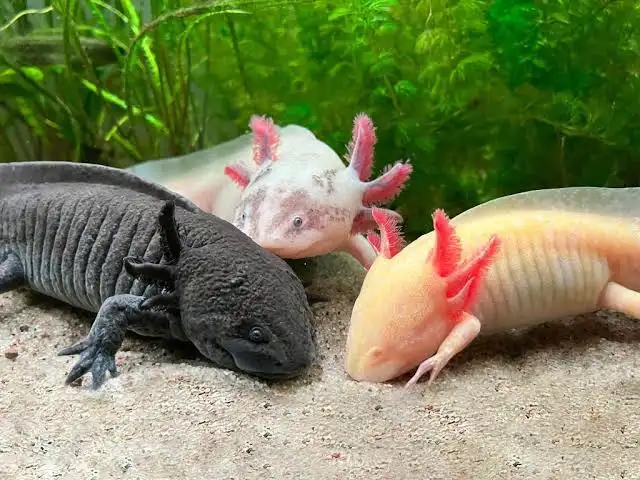The axolotl is one of the most fascinating creatures in the animal kingdom. Known for its youthful appearance, remarkable healing abilities and unique life cycle, this amphibian has captured the interest of scientists and animal lovers around the world. Native to the ancient lake system of Xochimilco in Mexico, the axolotl represents a rare species with features that set it apart from other amphibians.
A Creature That Never Grows Up
One of the most distinctive traits of the axolotl is its neoteny. This means it remains in its juvenile form throughout its entire life. Unlike most amphibians that transform from aquatic larvae into land dwelling adults, the axolotl keeps its gills, aquatic body structure and tadpole like features. This permanent youthfulness contributes to its charming appearance and biological uniqueness.
Regeneration That Defies Science
Axolotls are famous for their outstanding ability to regenerate. They can regrow lost limbs, tail, spinal cord, heart tissue and even parts of their brain. This regenerative capability has made them a subject of extensive scientific research. Understanding their healing process could help develop future medical breakthroughs related to tissue repair and organ regeneration.
Life in the Waters of Xochimilco
In the wild, axolotls live exclusively in the canals and wetlands of Xochimilco. These waters provide cool temperatures and abundant shelter, which are essential for their survival. Unfortunately, urban expansion and pollution have severely reduced their natural habitat. As a result, axolotls are now classified as critically endangered.
A Popular Species in Captivity
Despite their rarity in the wild, axolotls are widely kept in aquariums due to their unique appearance and relatively easy care. They come in various color morphs, including wild type, leucistic, albino and golden. Their calm behavior and distinct look make them popular among hobbyists and students studying biology.
Conservation Efforts
Efforts to protect and restore the axolotl’s natural habitat are ongoing. Conservation groups and local communities in Mexico are working together to clean waterways, rebuild ecosystems and raise awareness about this extraordinary species. Captive breeding programs also contribute to preserving genetic diversity for future reintroduction initiatives.
The axolotl is a remarkable example of nature’s innovation. Its permanent juvenile features, exceptional regenerative abilities and cultural significance make it one of the most unique animals on Earth. Learning about the axolotl not only enriches our understanding of amphibians but also highlights the importance of conservation and scientific research.





